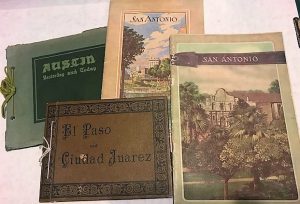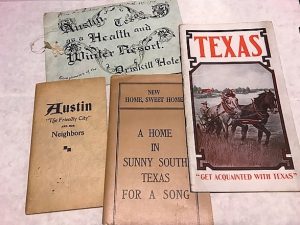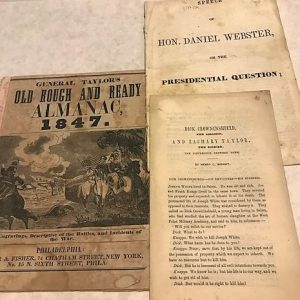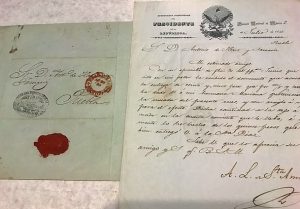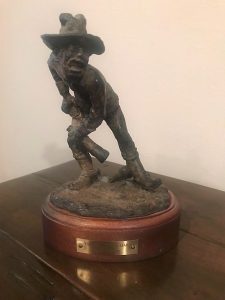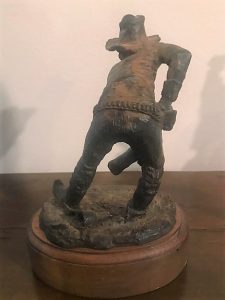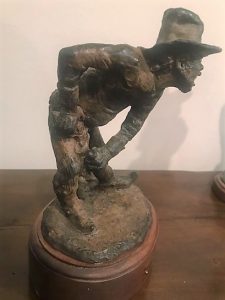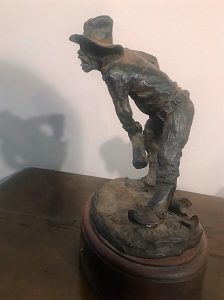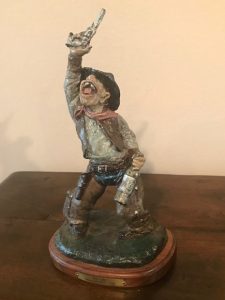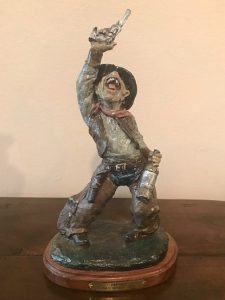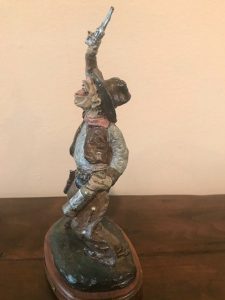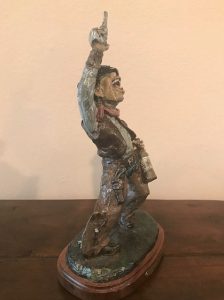As a Western Americana dealer I have few occasions to refer to a classic story many of us read in high school, but this post includes a Bartleby the Scrivener reference. Of course it does.
Monroe Edwards (circa 1808-1847) was an early Texas slave smuggler and forger. He moved to the Galveston Bay area of Texas about 1825 as a clerk for the merchant James Morgan. Soon after his arrival, however, he found more lucrative, if less respectable, pursuits. He became involved in smuggling slaves to Brazil from Africa and soon made a profit of $50,000. Through his mistress’s husband, a Mexican official, he obtained a large land grant in Brazoria County. He called his property Chenango Plantation, and used it as a base for continued slave smuggling to Texas from Cuba. His only claim to favorable historical recognition was his arrest and brief imprisonment, with others, by the Mexican garrison at Anahuac in 1832. – Handbook of Texas. Among his misdeeds, he once sold an entire plantation of slaves he did not own to an abolitionist who had intended to free them. He was finally convicted for an elaborate and lucrative cotton-broker forgery scam in 1842. Several sensational accounts of his offenses and trial were published after his death, and he was mentioned in Herman Melville’s 1853 short story “Bartleby, the Scrivener.”
We recently acquired a a land survey for “one third of a league of land for Monroe Edwards situated 10 miles below San Patricio on the west side of the Nueces River.” It includes a small inset manuscript map of the property. Texan politician Alexander Russell is mentioned as a neighbor. This is a certified 1839 copy of a January 1838 survey, drafted and signed by James M. Manning, the original surveyor. Below Manning’s signature is an additional attestation by a county surveyor dated 1840 which has been crossed out.
James M. Manning was one of the initial surveyors in the San Patricio, Nueces County, and South Texas areas. He was appointed Deputy Surveyor of San Patricio County on March 8, 1838, at a time when much of South Texas, including present day Nueces County, was a part of that jurisdiction. His appointment likewise occurred only two years after the establishment of the General Land Office of the Republic of Texas and one year after legislation created land districts with surveyors and deputy surveyors in each county. When the Texas boundary was permanently extended to the Rio Grande in 1846, Manning served as one of the first Anglo-American surveyors of this region. His work influenced other early South Texas surveyors such as Felix A. Blucher. His papers are held at TAMU-Corpus Christi.
[Republic of Texas.] Manning, James M. Survey and map of land on the Nueces River, done for the notorious crook Monroe Edwards. 2 manuscript pages, 10 x 7 3/4 inches, plus integral blank with docketing; folds and minor wear. San Patricio, Texas, 29 January 1839.

